Travelers 2014 Annual Report Download - page 69
Download and view the complete annual report
Please find page 69 of the 2014 Travelers annual report below. You can navigate through the pages in the report by either clicking on the pages listed below, or by using the keyword search tool below to find specific information within the annual report.-
 1
1 -
 2
2 -
 3
3 -
 4
4 -
 5
5 -
 6
6 -
 7
7 -
 8
8 -
 9
9 -
 10
10 -
 11
11 -
 12
12 -
 13
13 -
 14
14 -
 15
15 -
 16
16 -
 17
17 -
 18
18 -
 19
19 -
 20
20 -
 21
21 -
 22
22 -
 23
23 -
 24
24 -
 25
25 -
 26
26 -
 27
27 -
 28
28 -
 29
29 -
 30
30 -
 31
31 -
 32
32 -
 33
33 -
 34
34 -
 35
35 -
 36
36 -
 37
37 -
 38
38 -
 39
39 -
 40
40 -
 41
41 -
 42
42 -
 43
43 -
 44
44 -
 45
45 -
 46
46 -
 47
47 -
 48
48 -
 49
49 -
 50
50 -
 51
51 -
 52
52 -
 53
53 -
 54
54 -
 55
55 -
 56
56 -
 57
57 -
 58
58 -
 59
59 -
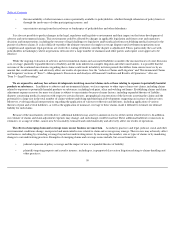 60
60 -
 61
61 -
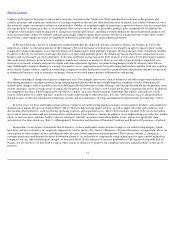 62
62 -
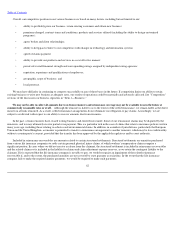 63
63 -
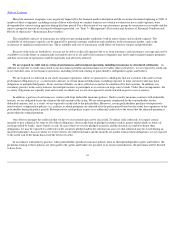 64
64 -
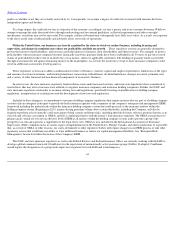 65
65 -
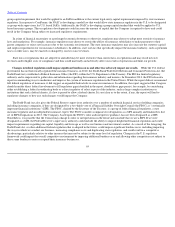 66
66 -
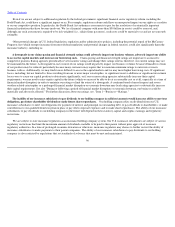 67
67 -
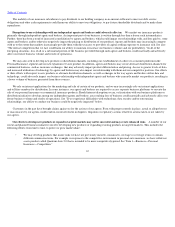 68
68 -
 69
69 -
 70
70 -
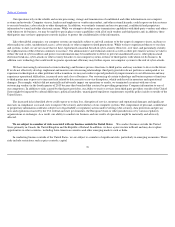 71
71 -
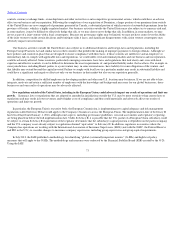 72
72 -
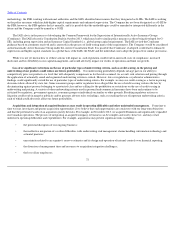 73
73 -
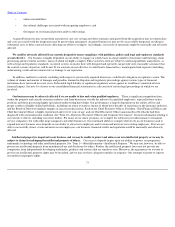 74
74 -
 75
75 -
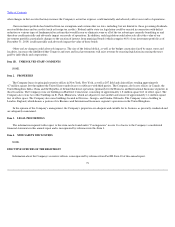 76
76 -
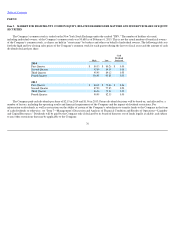 77
77 -
 78
78 -
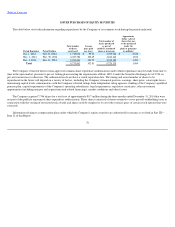 79
79 -
 80
80 -
 81
81 -
 82
82 -
 83
83 -
 84
84 -
 85
85 -
 86
86 -
 87
87 -
 88
88 -
 89
89 -
 90
90 -
 91
91 -
 92
92 -
 93
93 -
 94
94 -
 95
95 -
 96
96 -
 97
97 -
 98
98 -
 99
99 -
 100
100 -
 101
101 -
 102
102 -
 103
103 -
 104
104 -
 105
105 -
 106
106 -
 107
107 -
 108
108 -
 109
109 -
 110
110 -
 111
111 -
 112
112 -
 113
113 -
 114
114 -
 115
115 -
 116
116 -
 117
117 -
 118
118 -
 119
119 -
 120
120 -
 121
121 -
 122
122 -
 123
123 -
 124
124 -
 125
125 -
 126
126 -
 127
127 -
 128
128 -
 129
129 -
 130
130 -
 131
131 -
 132
132 -
 133
133 -
 134
134 -
 135
135 -
 136
136 -
 137
137 -
 138
138 -
 139
139 -
 140
140 -
 141
141 -
 142
142 -
 143
143 -
 144
144 -
 145
145 -
 146
146 -
 147
147 -
 148
148 -
 149
149 -
 150
150 -
 151
151 -
 152
152 -
 153
153 -
 154
154 -
 155
155 -
 156
156 -
 157
157 -
 158
158 -
 159
159 -
 160
160 -
 161
161 -
 162
162 -
 163
163 -
 164
164 -
 165
165 -
 166
166 -
 167
167 -
 168
168 -
 169
169 -
 170
170 -
 171
171 -
 172
172 -
 173
173 -
 174
174 -
 175
175 -
 176
176 -
 177
177 -
 178
178 -
 179
179 -
 180
180 -
 181
181 -
 182
182 -
 183
183 -
 184
184 -
 185
185 -
 186
186 -
 187
187 -
 188
188 -
 189
189 -
 190
190 -
 191
191 -
 192
192 -
 193
193 -
 194
194 -
 195
195 -
 196
196 -
 197
197 -
 198
198 -
 199
199 -
 200
200 -
 201
201 -
 202
202 -
 203
203 -
 204
204 -
 205
205 -
 206
206 -
 207
207 -
 208
208 -
 209
209 -
 210
210 -
 211
211 -
 212
212 -
 213
213 -
 214
214 -
 215
215 -
 216
216 -
 217
217 -
 218
218 -
 219
219 -
 220
220 -
 221
221 -
 222
222 -
 223
223 -
 224
224 -
 225
225 -
 226
226 -
 227
227 -
 228
228 -
 229
229 -
 230
230 -
 231
231 -
 232
232 -
 233
233 -
 234
234 -
 235
235 -
 236
236 -
 237
237 -
 238
238 -
 239
239 -
 240
240 -
 241
241 -
 242
242 -
 243
243 -
 244
244 -
 245
245 -
 246
246 -
 247
247 -
 248
248 -
 249
249 -
 250
250 -
 251
251 -
 252
252 -
 253
253 -
 254
254 -
 255
255 -
 256
256 -
 257
257 -
 258
258 -
 259
259 -
 260
260 -
 261
261 -
 262
262 -
 263
263 -
 264
264 -
 265
265 -
 266
266 -
 267
267 -
 268
268 -
 269
269 -
 270
270 -
 271
271 -
 272
272 -
 273
273 -
 274
274 -
 275
275 -
 276
276 -
 277
277 -
 278
278 -
 279
279 -
 280
280 -
 281
281 -
 282
282 -
 283
283 -
 284
284 -
 285
285 -
 286
286 -
 287
287 -
 288
288 -
 289
289 -
 290
290 -
 291
291 -
 292
292 -
 293
293 -
 294
294 -
 295
295 -
 296
296 -
 297
297 -
 298
298 -
 299
299 -
 300
300 -
 301
301 -
 302
302 -
 303
303 -
 304
304 -
 305
305 -
 306
306 -
 307
307 -
 308
308 -
 309
309 -
 310
310 -
 311
311 -
 312
312 -
 313
313 -
 314
314 -
 315
315 -
 316
316 -
 317
317 -
 318
318 -
 319
319 -
 320
320 -
 321
321 -
 322
322 -
 323
323 -
 324
324 -
 325
325 -
 326
326 -
 327
327 -
 328
328 -
 329
329 -
 330
330 -
 331
331 -
 332
332 -
 333
333 -
 334
334 -
 335
335 -
 336
336 -
 337
337 -
 338
338 -
 339
339 -
 340
340 -
 341
341 -
 342
342 -
 343
343 -
 344
344 -
 345
345 -
 346
346 -
 347
347 -
 348
348 -
 349
349 -
 350
350 -
 351
351 -
 352
352 -
 353
353 -
 354
354 -
 355
355 -
 356
356 -
 357
357 -
 358
358 -
 359
359 -
 360
360 -
 361
361 -
 362
362 -
 363
363 -
 364
364 -
 365
365 -
 366
366
 |
 |

Table of Contents
•
We may refine our underwriting processes. For example, in certain of our businesses in recent years, we have substantially
increased the volume of business that flows through our automated underwriting and pricing systems.
•
We may seek to expand distribution channels, such as our establishment of a direct
-
to
-
consumer platform in Personal Insurance.
•
We may focus on geographic markets within or outside of the United States where we have had relatively little or no market share.
We may not be successful in introducing new products or expanding in targeted markets and, even if we are successful, these efforts may
create enhanced risks. Among other risks:
•
Demand for new products or in new markets may not meet our expectations.
•
To the extent we are able to market new products or expand in new markets, our risk exposures may change, and the data and models
we use to manage such exposures may not be as sophisticated or effective as those we use in existing markets or with existing
products. This, in turn, could lead to losses in excess of our expectations.
•
Models underlying automated underwriting and pricing decisions may not be effective.
•
Efforts to develop new products or markets have the potential to create or increase distribution channel conflict, such as described
above under "—Disruptions to our relationships with our independent agents and brokers could adversely affect us."
•
In connection with the conversion of existing policyholders to a new product, some policyholders' pricing may increase, while the
pricing for other policyholders may decrease, the net impact of which could negatively impact retention and profit margins.
•
To develop new products or markets, we may need to make substantial capital and operating expenditures, which may also
negatively impact results in the near term.
If our efforts to develop new products or expand in targeted markets are not successful, our results of operations could be materially and
adversely affected.
We may be adversely affected if our pricing and capital models provide materially different indications than actual results.
The profitability
of our property and casualty business substantially depends on the extent to which our actual claims experience is consistent with the
assumptions we use in pricing our policies. We utilize third
-
party and proprietary models to help us price business in a manner that is intended to
be consistent, over time, with actual results and return objectives. We incorporate the Company's historical loss experience, external industry data
and economic indices into our modeling processes, and we use various methods, including predictive modeling, forecasting and sophisticated
simulation modeling techniques, to analyze loss trends and the risks associated with our assets and liabilities. We also use these modeling
processes, analyses and methods in making underwriting, pricing and reinsurance decisions as part of managing our exposure to catastrophes and
other extreme adverse events. These modeling processes incorporate numerous assumptions and forecasts about the future level and variability of:
interest rates, inflation, capital requirements, and frequency and severity of losses, among others, that are difficult to make and may differ materially
from actual results.
Whether we use a proprietary or third
-
party model, future experience may be materially different from past and current experience incorporated
in a model's forecasts or simulations. This includes the likelihood of events occurring or continuing or the correlation among events. Third party
models may provide substantially different indications than what our proprietary modeling processes provide. As a result, third
-
party model
estimates of losses can be, and often have been, materially different for similar events in comparison to our proprietary estimates. The differences
between third
-
party model estimates
68
